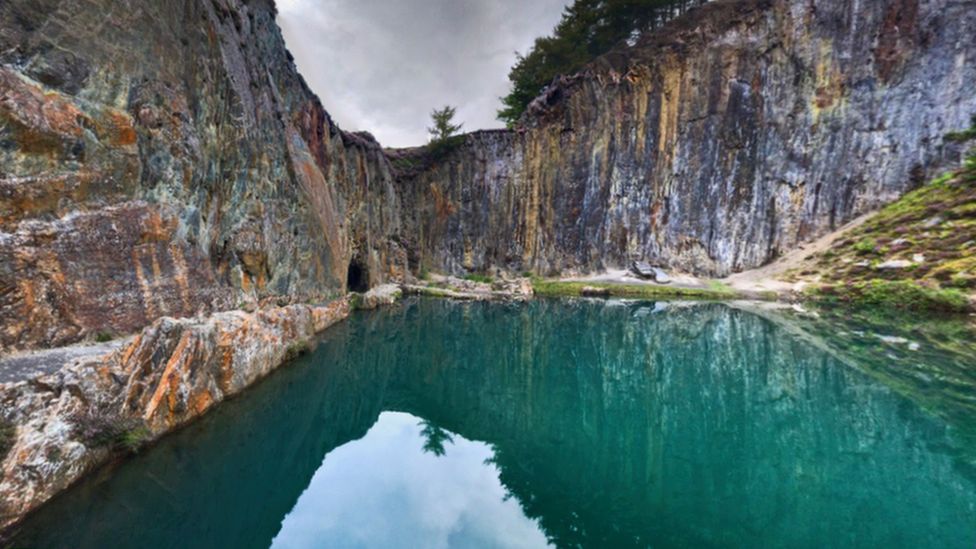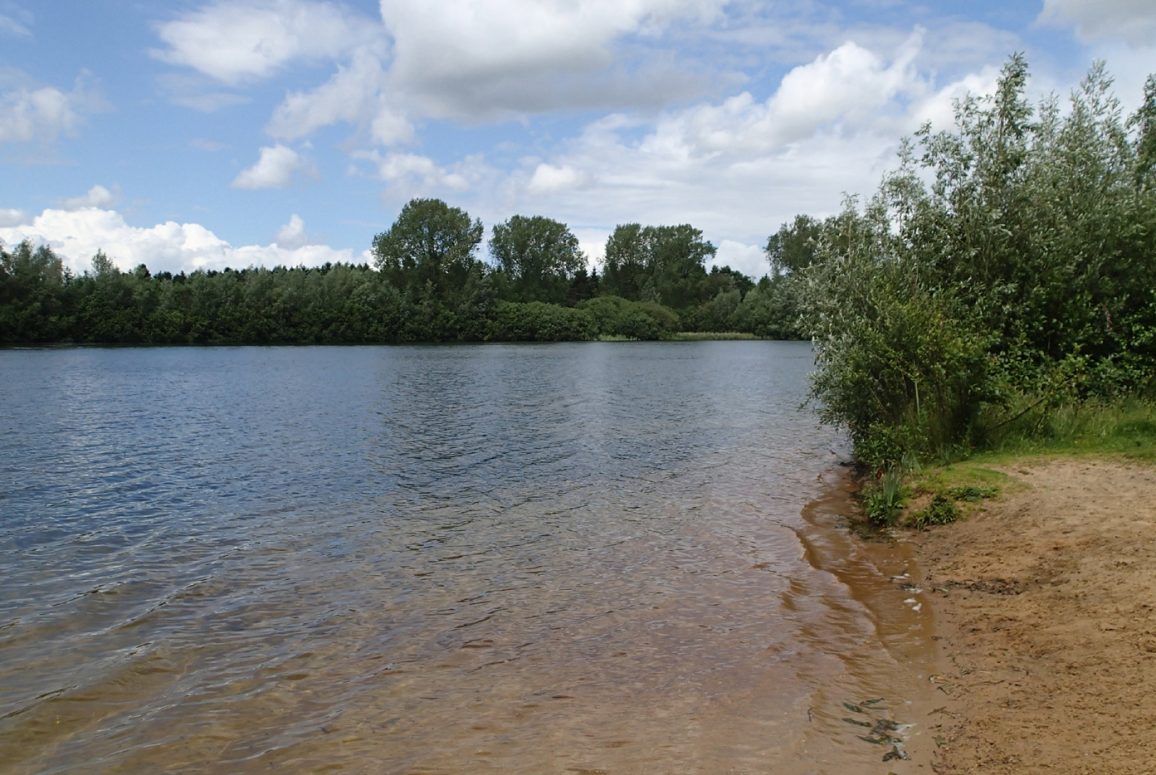
Access to flooded quarries varies, with some being repurposed as managed open water lakes or as the centrepiece in holiday villages, some being used informally for swimming and others closed to the public. Here’s what you need to know about the hazards in quarries.
Flooded quarries vary considerably, from stone quarries – which could have steep sides, rockfalls, debris and possibly industrial pollution or unusually high pH, to old brickworks or clay lakes – which could have beaches littered with bricks, to sand or gravel pits – many of which have gently sloping sandy beaches.
The water is usually clear, often blue, and some ex-quarries are popular swimming and jumping places.
However there can be hazards.
The water in quarries behaves in a similar way to lakes – it warms in summer and, if the water is deep enough, thermal layers might be present with the warmest layer on top and cooler layers beneath. Those jumping in may encounter these cold bands, which could induce cold water shock. Swimmers not used to cool water could experience cold incapacitation, especially if they encounter colder areas out in the quarry or lake. Flooded quarries are usually spring or stream-fed, and water from underground is relatively cold in summer so you might find a patch of cooler water where the spring or stream enters.
For more on cold shock and cold incapacitation , see Risks of Cold Water.
Stone quarries can often have steep sides or can shelve sharply from a shallow beach to deep water. There is a risk of weak or non-swimmers stumbling or falling out of their depth. There might be a lack of easily accessible entry and exit points.
The silica banks of some quarries can collapse quite easily, and ex working stone quarries can have an increased risk of big and dangerous rock falls.
Potential hazards in quarries include:
Quarries do not have hidden currents, beyond the flow from filler streams and springs, and there are no currents that will drag a swimmer under the water.
Like any lake, a strong wind can make swimming harder, so if you swim with the wind you need to return against it, and if not used to the cold this could increase the risk of cold incapacitation. Inflatables can take a non-swimmer or weak swimmer away from the shore and unable to get back.
 An ex sand quarry, Norfolk. Imogen Radford
An ex sand quarry, Norfolk. Imogen Radford
Disused quarries can be in remote areas, hidden from public view, without phone reception to call for help, and can have difficult access for emergency services.
They can be intimidating even if not plastered in KEEP OUT signs, and this might mean that fewer family groups and adults that often unofficially moderate at other swimming locations are present. That makes it less easy to pass on information on hazards like cold shock or incapacitation, recent underwater hazards such as a tree underwater, a new rock fall or low water levels, or to influence behaviour. If places are forbidden they can be used in unsafe and irresponsible ways, particularly by young men, including mixing drinking with swimming and jumping. Some users lack experience of cold water and knowledge of the hazards.
The owners of quarries have asked the swimming community to play its part in reducing publicity around specific quarry lakes locations.
There might be opportunities to work with landowners to spread messages of common hazards and how to deal with them, and to promote safe and responsible behaviour (as in the Outdoor Swimmers Code), while landowners warn of any specific hazards that might not be obvious.
 An ex gravel quarry, Norfolk. Imogen Radford
An ex gravel quarry, Norfolk. Imogen Radford
 Imogen Radford
Imogen Radford
 An ex sand quarry, Norfolk. Imogen Radford
An ex sand quarry, Norfolk. Imogen Radford